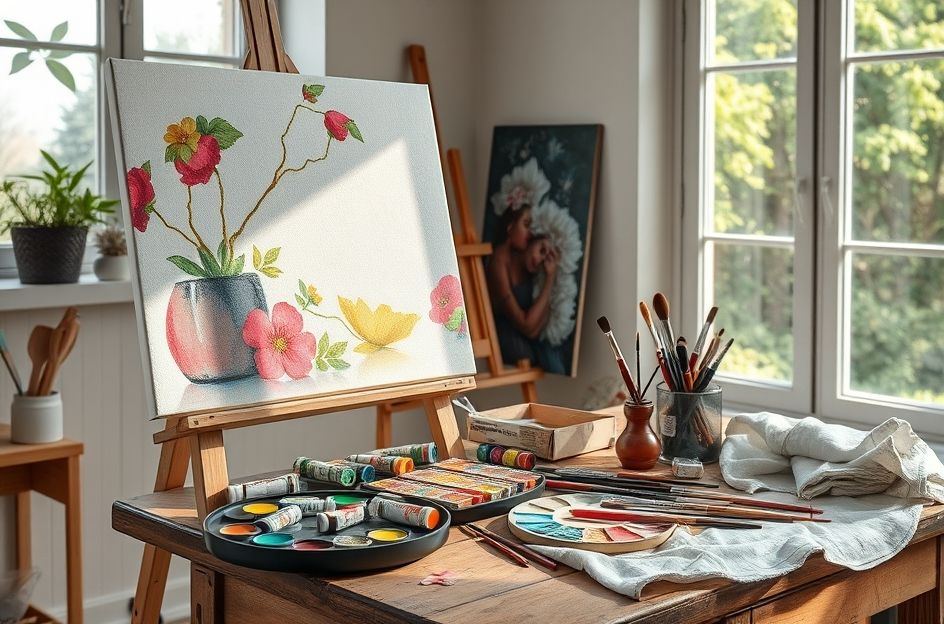Embarking on the journey of oil painting can be incredibly rewarding. This guide provides the essential steps to get you started.
First, ensure your workspace is well-ventilated. Open a window or door, use a fan, and choose a spacious area to allow for ample air circulation. If painting outdoors, secure all your materials to prevent them from being blown away by the wind. Be mindful that insects may be attracted to citrus thinner.
Protect your work area by laying down a drop cloth, tarp, or plastic bag, securing the edges with masking tape to prevent bunching. Ensure the covered area is large enough for comfortable movement. If using a table easel, cover the floor beneath the table and your standing or sitting area.
Before handling the paints, put on your painting attire, including gloves. Prepare two containers: one with paint thinner and another with a mixture of two parts paint thinner and one part walnut oil. Fill each container halfway, approximately to a height of three inches and a diameter of two inches. Arrange your paint palette, palette knife, brushes, paint rags, and tubes within easy reach for a comfortable setup.
When selecting your paints, start with a limited palette. If using primary colors, squeeze out a dime-sized amount of cadmium red, yellow, and blue onto your palette, spacing them apart in a triangular formation. Place a nickel-sized spot of Titanium white oil paint in the center of the triangle. Use your palette knife to mix these colors as needed.
With your workspace prepared and paints ready, you are now set to begin creating your oil paintings.
